Q&A: Mars, malaria and monstrous ducks
It’s Q&A time! In this episode we’ll be answering questions from you, our listeners, such as how close are we to developing a vaccine against the common cold, what’s it like to live on Mars and what are the weirdest animals in Antarctica? That’s right this week is dedicated to you. We're answering all your questions with the help of supernova scientist Sarafina Nance, marine mastermind Huw Griffiths, viral virtuoso John Tregoning and genetic genius Nessa Carey...
In this episode
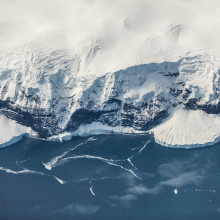
04:53 - What do animals eat in Antarctica?
What do animals eat in Antarctica?
Sally Le Page got into contact with Huw Griffiths from the British Antarctic Survey to ask him about the ecosystem of the supposed barren Antarctic area...
Huw - That's a really good question because Antarctica actually isn't as barren as it appears on the surface. Beneath that ice that you see, especially in the oceans, it's an incredibly rich and diverse place, but on land, the biggest plants are mosses and lichens and things and the biggest animals are wingless midges. So the food chain on land is very short and largely microbial. But essentially once you get into the oceans, you've got the biggest animals on Earth, the blue whales and everything feeding on what is quite a short food chain for the mammals and birds. You've got tiny microscopic phytoplankton, which is feeding these tiny animals that people have heard of that are called krill, which are a bit like shrimp, but they're actually a bit bigger than people think. They're not microscopic, they're a few centimetres long and they can live a couple of years. The krill poo is raining down on everything below, which is providing a huge amount of food source for the sea floor. That alongside the 24-hour daylight in the summer means that there's a huge amount of food sinking down to the bottom of the sea and the diversity there is tens of times higher than you get at the surface, where you end up with about 20,000 species. Lots of them are brand new to science that are all eating what's raining down from above. It's quite an amazing environment.
Sally - It sounds like life below the ice is a lot nicer than actually life above the ice, the bit that we picture when we think of the Antarctic. Is that right?
Huw - Definitely. It's quite stable, but also there's this regular food supply. You don't need to be all fighting over one bit of food, there's enough food for everybody. But also it looks in places a bit like a coral reef and there's a lot of colour and diversity and two metre tall sponges that live for thousands of years. You've got all sorts of amazing filter-feeding animals and ones that eat the mud. And then at the surface, the places we think about, it's a really harsh place where everything's killing each other to stay alive because they're in a place where it's boom and bust, summer and winter, and even the ducks on the sub-Antarctic Islands of South Georgia eat flesh because there's no plant material for them to eat in the winter. So it's quite a harsh place to be if you're at the surface, but actually quite a nice place, if you can cope with the cold water at the bottom of the sea.
Sally - I'm sorry. Flesh-eating ducks?
Huw - Yes, the South Georgia Pintail, the world's only flesh-eating duck.
Sally - That is a nightmare I never knew I had until now.
Huw - It is pretty horrible. It is almost, it's not a dog-eat-dog, but it's a duck-eat-duck world out there almost in South Georgia. Because if you go to the beaches, there will be birds waiting for seals to be born so they can start attacking and eating them, or penguins coming ashore being eaten by seals as they come in. It is like a 24/7 David Attenborough documentary of everything eating each other.
Nessa - Will the deep Antarctic be protected from global warming? Will we see that those ecosystems remain more intact or will even that be affected?
Huw - So you're definitely right that the shallow waters around Antarctica are some of the fastest warming waters on Earth and we're losing things like sea ice. So indirectly they'll be affected by things like the sea ice disappearing because this food that rains down very often, a lot of the species are dependent on the sea ice over winter. If that's missing, you'll have less krill or you'll have less phytoplankton. So there's less food, but also those deep waters are warming. It's like when Antarctica is warming in the middle of the continent that you go from -50ºC to -48ºC or something. It still feels very cold and for us that seems like it's not a big change, but actually for some of these animals that are very specially adapted to cold water, the idea that something else could come in and compete with them, even with a small amount of warming, could be a bigger danger than the actual warming itself.
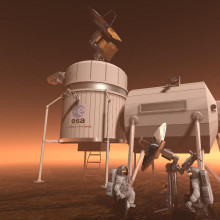
08:58 - What's it like to live on Mars?
What's it like to live on Mars?
Sarafina Nance is a astrophysicist and cosmologist who recently spent two weeks simulating life on Mars. Sally Le Page asked them about their experiences.
Sarafina - I attended a Mars simulation, which was basically living on a volcano in Hawaii and living like I'm an astronaut on Mars with a crew of four other people and doing research and testing our limits.
Sally - How close did they get to simulating Mars? Did they go around spray painting all of the volcanic rocks red?
Sarafina - The landscape on Mauna Loa, which is where we were, is actually pretty similar to the landscape on Mars. That volcanic rock replicates very similar to what Mars is like. And then you're sort of plopped in this isolated, harsh environment where you live in a habitat.
Sally - By habitat, is that like a bubble like we see in The Martian?
Sarafina - Yeah. It's this white dome that is completely sealed off from the elements outside, and every time you leave the habitat you need to be approved by mission control. You need to suit up in your EVA or extra vehicular activity or spacewalk suit. And then you get to go do research, then you return and reassess and then go do everything again the next day. So it really is modelling, as much as possible, what it might be like to be astronauts on another world. We all lived and worked and worked out in the same place, no showers, tiny, tiny, tiny bedrooms, compost toilets.
Sally - What would you say is the most challenging part about that whole experience?
Sarafina - I think one of the most challenging parts was the food. Freeze dried food every day, every meal for two weeks. And then just imagine for a long duration missions, it can be up to a year, it's very challenging. We had quinoa and bell peppers, and I don't think I will ever eat bell peppers ever again after eating those every day.
Sally - Is this the same food that they eat on the International Space Station?
Sarafina - So there's a little bit more variety I think on the ISS. They just ate chili peppers, granted they grew them there, but I think they have a few more opportunities to change food up. But that's one of the main things that they were studying early on at this habitat was how do we give enough variety to astronauts who are gone for a long time and what they eat? So they went through meal replacements, they went through freeze dried food, and it ended up that some sort of full kitchen with freeze dried food was a good opportunity.
Huw - You're probably ready to go and work in Antarctica now because a lot of that has very high similarities with our people who do three or four months in a tent. It's just whatever they can boil on a tiny stove and it's all freeze dried food, and you cycle through maybe five or six types of meal. And that's it, unless you have a very good field assistant who can turn two pans into an oven to make some bread in the field or something which is a miracle.
Sarafina - I know many astronomers who have gone to do field work in Antarctica. And there's a lot of correlation with that. That's actually something I'm really interested in because there are potentially meteorite samples in Antarctica that we can collect to study for supernovae, which is what I focus on.
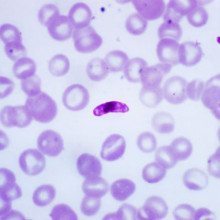
14:00 - Will we be able to eradicate malaria?
Will we be able to eradicate malaria?
Our presenter Sally Le Page poses this question to Infectious Disease Researcher John Tregoning in order to get his take on the likelihood of putting a stop to Malaria.
John - Yes. Optimistically, I think we can. And not just with the vaccines. I think there'll be a number of different ways, but if you go back 400 years, malaria was much more widespread. Shakespeare had the 'ague', which we probably think was malaria and it was associated with swampy grounds. As the places like East Anglia were drained properly, the mosquitoes that carry the malaria disappeared, so through a program of getting rid of that family of mosquitoes that carries malaria, and some vaccines, and some drugs that stop transmission, and better bed nets, you could get to a place where we are malaria free. Remarkably in the last year, China became malaria free and there are relatively few countries that now have malaria. So yes, I think we can achieve that and not necessarily through vaccines.
Sally - That's amazing. Such good news. What about everyone's favourite infectious disease, the common cold? Are we ever going to wipe that out?
John - No. Because it isn't one thing. Common cold is a whole collection of viruses, bacteria, fungi; anything that can get into your nose and inflame it and cause you to make snot and mucus is a common cold. There are as many things under the Sun that can cause those, as you can imagine.
Sally - Where does coronavirus fit on that scale between smallpox and flu that in terms of viruses stable enough that we could wipe them out?
John - There's lots of different coronaviruses. The one that's just caused the pandemic is SARS‐CoV‐2. It's the second very severe recorded coronavirus in the last 15 years. But there are other ones that are kind of common cold coronaviruses that if you went around and swabbed people, you'd find these kinds of endemic coronaviruses. In theory they are more stable than influenza. So when flu makes copies of itself, we describe it as leaky. Basically when it makes copies of its own genetic material, it's like when you make a photocopy of a photocopy of a photocopy. Each time you add it, you put in more and more errors.
Flu changes quite quickly over time, while coronaviruses have something called a proofreading ability, which is like somebody checking the photocopies and putting the original one back on and making clean copies each time. So in theory, coronaviruses don't change as quickly as flu viruses. We have seen them changing in the last 18 months, but that's probably because everyone has had it, meaning it has had much more opportunities to change; the more rolls of the dice, the more changes you'll get.
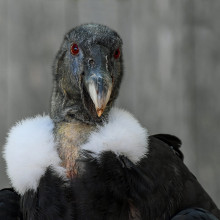
16:46 - How can condors reproduce without a mate?
How can condors reproduce without a mate?
In order to answer this condor conundrum, Sally Le Page posed this question to molecular biologist, Nessa Carey.
Nessa - Right, so Huw, I take your flesh-eating duck and I raise you a parthenogenetic vulture. Parthenogenesis is the phrase we use for creating live young without mating. We've had hints before that this can happen in birds, but we've never seen it in species like condors and vultures, which are these huge, huge scavengers. The really weird thing about these female condors that did it, is they actually had access to fertile males. Normally we only see this thing in birds of producing eggs and young under extreme conditions where there's no males around. But this time there were males, it's just for some reason, the females decided not to bother with them.
Sally - So it wasn't that the condors didn't have a man, they just didn't want a man.
Nessa - They just didn't want a man. They just decided that this time the vulture sisters were doing it for themselves. And these two females, so it's happened twice, they laid eggs and those hatched, it was little male condors that came out. It seems like what happened was when the female first started producing an egg, normally you basically halve the amount of your DNA, because essentially each offspring gets half from mum and half from dad. But it looks like what the female did was she halved her DNA and then thought 'I'll not bother with dad. I'll just copy this. So that I end up with the right amount of DNA and then we'll have a new condor.' And they did it, and absolutely nobody knows why.
Sally - And did you say that the chick was male?
Nessa - Both chicks were male.
Sally - But surely this means that if they've got exactly the same genetic information as their mother, wouldn't they just be a clone?
Nessa - No, because birds are different from humans. In humans the male has an X chromosome and a Y chromosome, it's the Y chromosome that creates being a male. Whereas women are XX, they have two identical what we call sex chromosomes. Birds are the other way around. In birds, the male has the two sex chromosomes that are exactly the same and the female has what's called a Z and a W. In these particular cases, the females passed on two of the Z chromosomes and created new males. Isn't it weird? There you go flesh-eating ducks, take that.
Sally - That is incredible. John?
John - Could the dinosaurs have done the same if they're in a similar family?
Nessa - Well, yeah, that's a great question.
Sally - Isn't that what happened in Jurassic Park?
Nessa - Which is, as we all know, highly scientifically accurate. It's not. It's not. Spoiler. It's not. Birds are dinosaurs. Basically the dinosaurs didn't die out, they just changed into birds. So chances are maybe the dinosaurs did. We certainly know lizards do. You know those Komodo dragons? Those really big, terrifying lizards that bite you and you die from blood poisoning if you don't die from having your leg bitten off? Well, we certainly know that they can do the same thing. There's been females in zoos who couldn't get near a male and who have had created offspring. It's basically, if you put enough pressure on almost any animal, apart from mammals, they manage to do this, but mammals can't.
Sally - Why don't we all just do parthenogenesis? It sounds great.
Nessa - Well it certainly solves that problem of 'can you find a decent boyfriend?' If that's something that you're struggling with, if you can't find the proper baby daddy. Mammals can't because mammals have placentas and we have systems built in that mean that you have to have some of your DNA from a male and some of your DNA from a female. If you don't, the offspring can't develop properly. So you never ever get live offspring. It has been done once in mice, but that's because the scientists mucked about with the DNA.
Sally - That ruddy placenta getting in the way.
Nessa - I know, more trouble than it's worth.
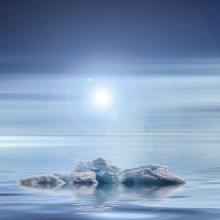
21:05 - How has global warming impacted Antarctica?
How has global warming impacted Antarctica?
Huw Griffith is an Antarctic marine biologist and was interviewed by Sally Le Page about his findings from his work in Antarcica, in particular about the effect climate change has on the area.
Huw - Any research in the polar regions has got that as a background, whether you're specifically researching climate change or not. So even stuff that I do at the bottom of the sea with a few creatures that either have loads of legs or no legs, or loads of eyes or no eyes, always in the background is how will these things be affected by climate change? Because we can see it out of the windows of our research stations; for example, we can see the glaciers retreating. I've been going to Antarctica for nearly 20 years now, and I can go places and see what's changed in my career, not my lifetime even, just my career. It is scary that we can observe these things first-hand now, and it's not just computer simulations or models of the future.
We see it with the length of season of things that can live down there for us, or we have ecosystems that reach what we call tipping points, where something switches from one way of doing things to another in a usually irreversible way. A really simple version of this is where the sea ice in the shallow water acts as a way of blocking some of the light out from getting to the bottom of the sea. Instead of a normal beach in the UK, where it's covered in seaweed, if you go just below that level in Antarctica, there would be animals dominating, covering the rock like sponges and corals and soft corals and things like that. But if the sea ice starts to get thinner earlier or even melts away earlier, you get more days of daylight at the bottom of the sea. And there's enough days then for the kelp to start to grow, and they start to grow over the top of these animals. And all it needs is a few extra days where the ice has melted a bit earlier and you get this switch to a completely different system.
Sally - It reminds me a bit of coral reefs in that once coral reefs have been bleached enough or the slimy algae grows on the top, then you'll never get your reef back. Once it's gone, it's gone. And it's really hard to get it back, even if you return to the conditions it was at before.
Huw - Exactly. We could lose some of our specialists, especially with warming. That extra bit of stress, some of these animals actually actively are fighting to keep their bodies held together in the cold, so less energy goes into reproduction or growth and things like that because you're just holding your body together in the cold water. If the water warms up a bit, some of the things you're doing could actually be harmful to you, but also the competitors that don't need to worry about doing that extra effort so they can eat faster, reproduce faster, grow faster, could all come in and out compete you. Those other animals are quite far away, but it's amazing that we thought Antarctica was so isolated, but we have tourist ships going down there now, scientific vessels, we have fishing boats going down there, all of which can carry animals backwards and forwards.
We even have things like microplastics and things washing into Antarctica, so even a place that we thought was quite safe from our impact has got things coming in. We have something like 700 million pieces of kelp floating around the Southern ocean at any one point and all you need is one particularly bad invasive species to be sat on one of those pieces of kelp and get washed onto the right beach in Antarctica in a warm year, and it could become established. That's why monitoring Antarctica and seeing where the most likely to be affected places are through climate change, ocean acidification and all these other things is the job that we do.

24:41 - Do we need to worry about Betelgeuse exploding?
Do we need to worry about Betelgeuse exploding?
Thanks to astrophysicist and cosmologist Sarafina Nance, our fears about this cosmic issue were answered in this interview lead by Sally Le Page.
Sally - So Sarafina I first have to clear up, is it 'beetle-juice' or 'beetle-gurs?'
Sarafina - 'Beetle-juice'. You were right on the money the first time.
Sally - Good, and as far as I know, it's in Orion. That's pretty much all I know about it. Tell us more about it.
Sarafina - Yeah. It's the left shoulder of Orion and shines bright red. If you ever look up at the night sky and see the Orion constellation, you'll be able to spot Betelgeuse pretty easily because it's so red compared to the other white stars. It's red because it's a red super giant, meaning it's very, very, very big and it's later on in its stellar evolution lifecycle than our Sun, for example. So it has ballooned out and taken up this red colour and everybody, astronomers and non-astronomers alike, has been really interested in Betelgeuse, especially recently because it has been fading and dimming and people have wondered whether that dimming means that it might be close to exploding.
It's interesting because there's no real astronomical, physical reason why it should dim before it explodes. In reality, we would think that it would actually get brighter before it explodes, and that's what we've seen when we sort of look to other stars that have exploded. But that said, Betelgeuse is extremely close to us, it's about 600 light years away so we get a different perspective of the precursors or the progenitors of supernova, by watching and monitoring Betelgeuse than we see from other stars. That has tested our theories of stellar evolution to make us wonder if we understand exactly what goes on in a star before it explodes.
Sally - You say 600 light years isn't very far away. Does that mean I should be worrying, packing an emergency bag, something like that in case it goes off?
Sarafina - So the good news is... well there's two pieces of good news. The first is that it's probably not going to explode for another hundred thousand years. So even though it's going through this sort of dimming and rebrightening lifecycle, it turns out that that's actually because the surface of Betelgeuse is sort of expelling bits of dust. That dust is obfuscating the star from our line of sight and Betelgeuse simply appears dimmer than it actually is. I like to say that Betelgeuse has been 'burping' a lot and we are sort of not seeing it because we're seeing the 'burp' and not the star itself, so that's the first piece of good news. The second piece of good news is that it's far enough away that we will not really be impacted by the explosion. If we're still around in a hundred thousand years, we will simply see a very bright star that'll be as bright as the moon during the day and the night for about a month, and then it will sort of dim away. That's about as much of an impact as that explosion will have on earth.
John - How close is bad?
Sarafina - For example if our Sun were massive enough to explode as a supernova, it's not, that's not how it's going to die, but if it were we would be screwed.
Sally - So we're safe from the Sun? The Sun won't go supernova?
Sarafina - We're safe from the Sun. However, it will expand into being a red giant and similar to how Betelgeuse is red super giant, the sun will continue to expand in a similar fashion, and it will actually sort of envelop the Earth throughout its expansion. So that's not good news for us.
Sally - At least we might have wiped out all infectious diseases by that point, John though.
Sarafina - That's the bright side.
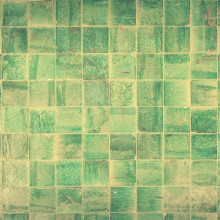
30:38 - November Quiz: Being Green
November Quiz: Being Green
Nessa Carey, University of Oxford; John Tregoning, Imperial College, London; Sarafina Nance, UC Berkeley; Huw Griffiths, British Antarctic Survey
We like to test our guests to make sure we’ve got the finest brains science has to offer, and of course, you at home can join in too and see if you can beat the boffins. We've got space scientist Sarafina Nance and infectious disease researcher John Tregoning in team 1, and molecular biologist Nessa Carey and Antarctic biologist Huw Griffiths in team 2.
As we are recording this episode in the middle of the international meeting about climate change that is COP26, Sally Le Page will be asking questions this week about being green.
Sally - Round one is 'being green for our planet'. Question one is coming to you Sarafina and John. 'If the whole world adopted a vegan diet, by what percentage would we reduce global agricultural land use? Is it A) 55%, B) 65% or C) 75%?'.
Sarafina - John what do you think?
John - I don't know.
Sarafina - Maybe, maybe, maybe B)? Solid middle ground.
Sally - No other reason than it is the middle answer. You're going for B).
Sally - The answer is C) 75%. Research suggests that if everyone adopted a vegan diet, we would also cut agricultural land use from 4 billion to 1 billion hectares. Isn't that incredible? Question 2, your first question Nessa and Huw. 'In the 1830s, the average person in the UK would have got by on just 18 litres of water per day. However, nowadays we are using over 135 litres a day. Toilet flushing accounts for a large proportion of our water use. What fraction of water used in the average UK home today goes down the toilet. Is it A) a fifth, B) a third, or C) a half?'
Nessa - Should we use their strategy and go for the middle one again? It feels about right.
Huw - I was going to say B) sounded better than the other ones to me.
Sally - Going for B) again, mostly just because it is the middle one and this time it is correct. The answer is a third of our water goes down the toilet.
John - One of the more disgusting things I learned while writing the book was that only 30% of men wash their hands after going to the toilet in petrol stations. That crept up to 40% during the pandemic, but I think it's crept back down again.
Nessa - Okay. So I'm now back onside with Sally and the 'can we follow the condors' because the men are not doing well here. You grubby creatures.
Sally - What does anyone touch inside a petrol station and how can I avoid touching it at all? Oh my goodness. I suppose they're using less water.
John - We're saving the planet. Through cleaner peeing.
Sally - Well at the end of round one, that's so far no points to Sarafina and John, and one point to Nessa and Huw, but you can still catch up. Round two in 'being green'; 'green is not only the colour of envy'. Question one to Sarafina and John. 'Emerald, aquamarine and morganite are all types of beryl. Their individual characteristic colours are determined by metal impurities. What metal impurity gives emerald its green colour. Is it A) chromium? Is it B) copper? Or is it C) cadmium?'
Sarafina - I think it's not copper. I have absolutely no idea, I just feel like you would be able to see that. I don't know.
John - What was the first one?
Sally - We have chromium, copper and cadmium.
John - Let's go chromium. It feels like that one that sort of crystal colour used to do for precipitations.
Sally - You're going for chromium. The answer is indeed chromium. Emerald is a green beryl coloured by about 2% chromium and sometimes vanadium. Aquamarine, which is obviously aquamarine coloured, blue, has iron impurities and the colour of morganite, which is a rose pink colour, can be attributed to manganese irons. Good job. Question two for Nessa and Huw. 'For hundreds of years, copper ores, such as malachite were used as green pigments. In 1775, Carl Wilhelm Scheele invented a new green pigment that took the world by storm. But what questionable component did he mix with copper to obtain this green colour? Was it A) potassium cyanide? Was it B) arsenic trioxide? Or was it C) mercury fulminate?'
Huw - The arsenic thing rings a bell. But lots of painters did horrible things by licking their brushes and things and getting all sorts of things, so it could be any of those that would give you a nasty end.
Sally - The radium women who painted radium paint onto watch faces used to have terrible poisoning after licking their brushes.
Huw - But lovely smiles.
Nessa - Until their jaws dropped off. For some reason, I'm associating arsenic with white for no reason whatsoever.
Sally - Gonna have to press you for an answer.
Nessa - Go on Huw, go with yours.
Huw - Yeah let's go with arsenic.
Sally - We're going with arsenic. And it's a good choice. The answer is indeed B) arsenic trioxide. Napoleon is famously believed to have been poisoned by his wallpaper that had been painted with Scheeles green. Arsenic is found in surviving samples of his hair, but even if there wasn't enough in the paint to kill Napoleon, there was enough in his hair to cause illness. So at the end of round two, that's one point to Sarafina and John, and two points to Nessa and Huw. So it's still all to play for. Round three in our 'being green' quiz is 'It ain't easy being green.' Kermit the frog performed the hit song 'Being Green' in 1970 for Sesame Street. As Kermit is a frog, this round is about frogs.
Nessa - That is not at all tenuous. I really, really like that.
Sally - This is just because I really like frogs, so I wanted to do a round on frogs. With this being a round on frogs, question one to Sarafina and John. '40% of amphibian species are under threat and a lot of that is because of a deadly frog fungus. This initially spread really quickly as frogs were being shipped around the world. What were they being used for? Was it A) as a mosquito control agent? Was it B) testing the safety of drinking water? Or was it C) pregnancy tests? Huw I see you know it, but this is not for you, so try to keep a poker face.
Sarafina - Can we call a friend?
John - Annoyingly three stories down is the guy who works on frog funguses and might have the answer. If you gave me 30 minutes to run down to Matt's office, I would have the answer.
Sally - Has he ever mentioned to you at lunchtime why frogs were such useful animals?
John - It's not pregnancy tests. What were the other two?
Sally - We've got as a mosquito control agent testing, the safety of drinking water and pregnancy tests.
Sarafina -
I think it's B) or C). Simply according to Huw's reaction, I think it's B) or C).
John - I'm gonna go B).
Sally - You're going to go for B), testing the safety of drinking water. Huw put them out of their misery. What is it?
Huw - Pregnancy testing.
Sally - It is indeed pregnancy tests. Female Xenopus frogs were widely used as pregnancy tests in the 1950s and 60s, and get this - a woman's wee was injected under the skin of a female frog. If she was pregnant, the frog would lay eggs about five hours later.
Sarafina - You're kidding.
Sally - I am not kidding. They shipped these Xenopus frogs all around the world for women to wee on them, and because they were shipping the frogs, they accidentally shipped the fungus with it. And now chytrid fungus is all around the world.
Huw - And the worst thing about this being radio is you didn't see the reactions of the other panelists.
Sally - Sarafina is still yet to pick her jaw up off the floor.
John - Would you buy them in the pharmacist with two lines on them?
Sally - I think you just go to the GP and say, 'excuse me, have you got a frog I could wee on.' Question two for Nessa and Huw. 'Frog tongues are marvels of evolution. They are 10 times softer than human tongues and can catch prey in the fifth of the time it takes to blink. They are also incredibly strong. Research has found out how much a horned frog tongue could lift relative to its body weight. If our tongues were that strong, what would we be able to pick up? Is it A) a small dog? Is it B) a medium fridge? Or is it a C) a large car? And I'll just pause to let you imagine picking up each of those items with your tongue.
Nessa - I can't talk now. My tongue has now been paralysed by the thought.
Huw - I don't want to go for B) again, because we've gone for B) on everything so far. So my brain is saying fridge, but my quiz head is saying they wouldn't give us three B's in a row so why don't we go for car instead? Because a dog, even my tongue could pick up a small dog so I don't feel worried about that.
Sally - Have you tried?
Huw - Every day.
Sally - Chihuahuas watch out if you're ever near the British Antarctic Survey station.
Nessa - Let's go for the car.
Huw - I want it to be car.
Nessa - So do I.
Sally - You really want it to be the car?
Nessa - Yeah, we really want it to be the car.
Sally - Sadly wanting it is not enough. It is B) a medium fridge. You were right with your science head, Huw. Horned frogs can lift 1.4 times their own body weight, and they can fire their tongue out at four meters per second. Isn't that astonishing? At the end of the quiz, Sarafina and John have one point, but Nessa and Huw have two points making Nessa and Huw the winners. You get ultimate bragging rights among all of your friends.
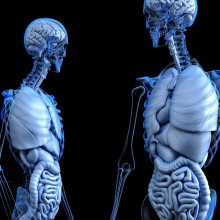
40:43 - Why do diseases often target the lungs?
Why do diseases often target the lungs?
Sally Le Page asked this infectous question to infectious disease researcher John Tregoning.
John - You need to think a bit more broadly. Anything that's inside you that faces the outside can get infected. We get gastric infections, we get GU infections infecting how you pee, but also how you breathe. And that's because those areas have to be a barrier, but they actually have to exchange things as well. Our lungs are essentially, if you imagine a sieve, they're very, very fine mesh that allows the air to go in and the carbon dioxide to come out. But at the same time, that's going to give space for bacteria and viruses to come through them. So the reason is that they are not just barriers, but they're exchange places. That's why you don't get infections on your skin, unless you get a cut. Then the bugs that live on your skin can get inside.
If everyone now takes a big breath in, you've just breathed in 10,000 bacteria and probably three fungi and a whole load of viruses. You're doing that all the time and yet you're not sick all the time. We have all these mechanisms that clear your lungs out, the sort of snot and the bogey that you have that sucks everything up and clears out. Unfortunately, the people who can't do that as well, so people have cystic fibrosis, have very sticky mucus in their lungs and the bacteria gets stuck in the lungs and can grow and kind of forms these colonies very similar to like what Huw might study in the bottom of the ocean. There are complex ecosystems in your lungs of the bacteria that live there. Related to that slightly but differently, is that on each tooth you have a completely different tooth microbiome. So every single tooth has a unique fingerprint of bacteria on it from the ones that kind of founded there and got dominance. Even when you clean your teeth, it just grows back to that kind of scuzzy stuff.
Sally - What stops them mixing from one tooth to another?
John - Because they're quite deep underneath the layers of liquid and the bacteria, they don't move between. But also it's so well established, what's in there already is forcing out anyone else. There's no kind of foothold in for other things.
Sally - I now don't know whether to feel good or bad about brushing my teeth. If I'm destroying these wonderful little ecosystems that are like the bottom of the Antarctic floor.
John - You should probably brush your teeth.
Sally - I should probably brush my teeth, yup. If you were a virus John, how would you spread?
John - If I was a virus I'd want to move from the nose to the nose because that's where sneezing would expel you furthest away. And you want to be able to go into that kind of that site so you can go to as many noses as quickly as possible. But you'd also want to be really stable so that you could stay on people's hands after they don't wash it when they get to the toilet and then they can put it on the surface and the Tube and the next person can come along and smear it into their own noses.
Sally - So basically a common cold. You'd be a common cold.
John - Common colds are pretty effective at moving around.
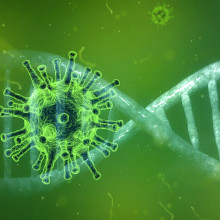
44:35 - Will CRISPR let us cure genetic diseases?
Will CRISPR let us cure genetic diseases?
Sally Le Page asked molecular biologist and Royal Society Entrepreneur in Residence at Oxford, Nessa Carey, about if we can cure genetic diseases through the study of genetics.
Nessa - In theory? Yes, some of them. In reality? Probably no, just because it would be very difficult to do. But we have this amazing technique now called CRISPR, which is basically a way of changing DNA. Every human inherits 3000 million letters of DNA information from their mum and 3000 million from their dad, so you get 3 billion of each. Sometimes just one of those might be wrong, one out of 3 billion can give you a really devastating genetic disease. Sometimes it's a bit more than that, so in cystic fibrosis that John mentioned it's three letters typically cause the most common form of cystic fibrosis. And it used to be, you could do nothing about it. But now this technique of CRISPR is this amazing way of changing DNA information incredibly precisely and incredibly sensitively and very, very effectively. And we're starting to use that to treat diseases.
Sally - How could we do that though? Because I've got millions or billions of cells in me and you'd have to change the DNA in every single cell. Right?
Nessa - Well, there's two ways of doing it. You have far more cells than that. You have 70 trillion.
Sally - I feel very good about myself now.
Nessa - If you counted them at one cell a second, it would take you one and a half million years. It's an incredible number of cells. If you look at the disease that we're closest to treating right now using this technique, it's sickle cell disease which is a disease of the red blood cells. To treat that, you don't have to treat every cell in the body, because most of the cells in the body are absolutely fine with sickle cell diseases. Only the ones that are in the red blood cells. So what companies are doing, because this is all being done by drug companies, is they take bone marrow out of somebody with sickle cell disease.
Sally - Because bone marrow is what produces the red blood cells.
Nessa - That produces the red blood cells. They use CRISPR to correct the genetic defect in the bone marrow. Then you inject that bone marrow back into the original patient and it starts producing normal red blood cells. So you can actually cure sickle cell disease rather than just treating it, which is just astonishing.
Sally - Does that mean that there are people walking around that we have genetically altered already?
Nessa - Yes there are, and the initial results are amazing. You have people who used to have to go to hospital for transfusions every month, who were in massive pain every month, now haven't been in hospital for over a year. Now the thing is though, there you're treating and then probably curing the individual, but if they have kids, they still have a 50% chance of passing on that defective gene to their children. We do in theory have the option of actually wiping out a genetic disease in a particular family. Which would be basically an egg and a sperm fuse and they formed the zygote, which is that single cell from which all these 70 trillion others were eventually derived you can use this technique, in theory, in that zygote. You'd have to do this in the test tube environment, so it's test tube baby technology. Then if you correct the genetic mutation and you implant that zygote back into the mother, every cell that comes from that original zygote, all 70 trillion of them, they will all have been corrected and you will have stopped that mutation and that disease in that family. Now that's going to be amazingly expensive and there's lots of ethical issues. You're not allowed to do it at the moment.
Sally - But we have the technology to do it.
Nessa - We have the technology to do it. We know that this works in other animal species. We will see a big change.
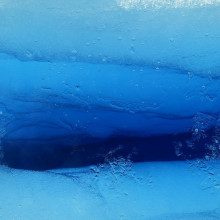
48:34 - Is it possible to swim in Antarctica?
Is it possible to swim in Antarctica?
We contacted Antarctic marine biologist Huw Griffiths in order to ask him our burning questions about his experience of working in Antarctica. Sally Le Page asked him about if he's ever been swimming in the freezing cold sea.
Huw - The answer is I can't because actually we have rules against it at our stations, after we actually had an accident where somebody was killed by a leopard seal. Which is the not very fun answer. So this is someone who is snorkelling at the time, so we have scuba divers but they also used to do some snorkelling, and we now have to have lots of hours of seal watching before people enter the water and be really careful about how we do those kinds of things. But there still are in some research stations, mid-winter swims, and it's quite amazing that human bodies can cope with swimming for a fairly long period of time in that temperature of water, as long as they're sorted out properly when they get out and if you've prepared for it. I've paddled in Antarctica and I can tell you that it felt like pins and needles. It was the most horrible cold that I've ever felt. So beyond that, I don't know why anyone would go in any further than their ankles, to be honest, but if they want to do it, it is doable.
Sally - And mid-winter, it's pitch black as well. So not only is it freezing, you can't see anything. Not for me.
Huw - No.
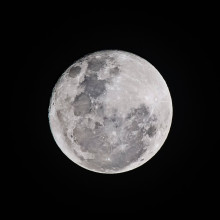
50:07 - Why is the moon white?
Why is the moon white?
We asked cosmologist Sarafina Nance to answer this colourful question...
Sarafina - That's a good question. There are several different aspects to this answer. One is that the Moon doesn't have life on it. The Earth has oceans and has different landmasses. The other thing is the Moon is composed of various elements, like oxygen and silicon that contribute to the grey colour of the Moon that we see. Then you have this volcanic activity where a lot of the rocks that are under the surface have actually been expelled from the inside of the Moon during volcanic eruptions, and then end up on the surface of the Moon. But ultimately I think the big thing is that when we look at the Moon from the Earth, we are seeing it as particles in the atmosphere scatter certain types of wavelengths of light. Blue is scattered very easily and red isn't and depending on where the Moon is in the atmosphere, that's closer to the horizon versus higher up in the atmosphere, the moon actually changes colour.
John - What's in the middle of the Moon?
Sally - Cheese, John. Don't you know?
Sarafina - I think Sally has the best answer. There's some volcanic activity on the Moon, but it has a lot of impact craters from various planetary bodies and other sorts of bodies that have rammed into it, but I actually don't know what the substructure is as you penetrate the surface of the Moon.
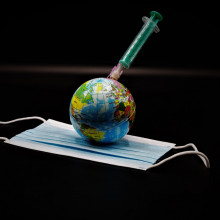
51:53 - How can we prevent the next pandemic?
How can we prevent the next pandemic?
John Tregoning is an Infectious Disease Researcher and was interivewed by Sally Le Page about his advice on how we can best prevent pandemics in the future.
John - We can't. There will be other pandemics. The biggest threat at the moment is actually bacteria that we can't treat with antibiotics. That's a kind of slow burn pandemic. It's similar to the kind of global heating problem that we're seeing. We can develop better tools to deal with them quicker so we can make vaccines faster, and we can understand how to contain them. The reason why SARS spread so quickly is because people were spreading it when they were asymptomatic, so you could basically be infected, pass it to somebody else, and maintain this invisible mass of viruses. So the short and not very optimistic answer is that 'no there will be more pandemics. We just have to build the toolkit to deal with them once they happen.'
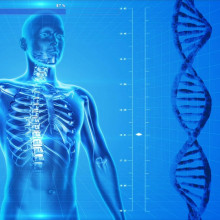
52:48 - Epigenetics. What exactly is it?
Epigenetics. What exactly is it?
Sally Le Page interviewed molecular biologist Nessa Carey to help us understand what exactly 'epigenetics' is and how our day-to-day life affects it.
Nessa - So everyone knows about the genetic code, which is DNA and which is very stable and doesn't change much during your life, on top of that there's additional information called epigenetics. It's a bit like if you think about a book and then you put post-it notes in the book to highlight certain things.
Sally - Or the worst, the people who draw on books with pens.
Nessa - Oh yeah. But there is a special circle of hell for those people. So we're going to leave those to one side. Basically you have this additional information written all over your genes, which controls how genes are expressed. Modern lifestyle, yes, will be affecting epigenetics so it will be changing that epigenetic system. Doesn't mean that's a bad thing. The epigenetic system is part of how we adapt to the environment around us. Huw's little toes would have been epigenetically altered by paddling in the Antarctic. I don't even go paddling in Norfolk; I don't know what the heck he was thinking. But anyway, everything that we do will be influenced in exactly the same way that people in the Middle Ages were epigenetically influenced by living with their pigs in their hovels, etc. It's just a way of adapting. People worry that we pass this epigenetic information on to next generations and under very rare circumstances maybe we do, other species do, but we don't need to worry about it in the grand scheme of things. The thing that is important is what you're experiencing at the time, so no need for epigenetic panic, there's a lot more things that I would panic about before I worried about epigenetics.

54:26 - What is November's mystery sound?
What is November's mystery sound?
We presented this sound to a panel of scientists to see if they could figure out what it was. Give it a listen and see if you can identify the sound faster than this group of experts.
Have you solved it?
The answer is a shiitake mushroom. These sounds are produced by living fungi. Shiitake mushrooms still attached to their mycelium bodies as part of an art installation by Michael Prime. All living organisms produce a faint electrical current as they move ions in and out of their cells, and what Michael did is he used tiny electrical sensors so that this current controlled an oscillator to produce the sound you heard, that is, the sound of the shiitaki mushroom growing.










Comments
Add a comment